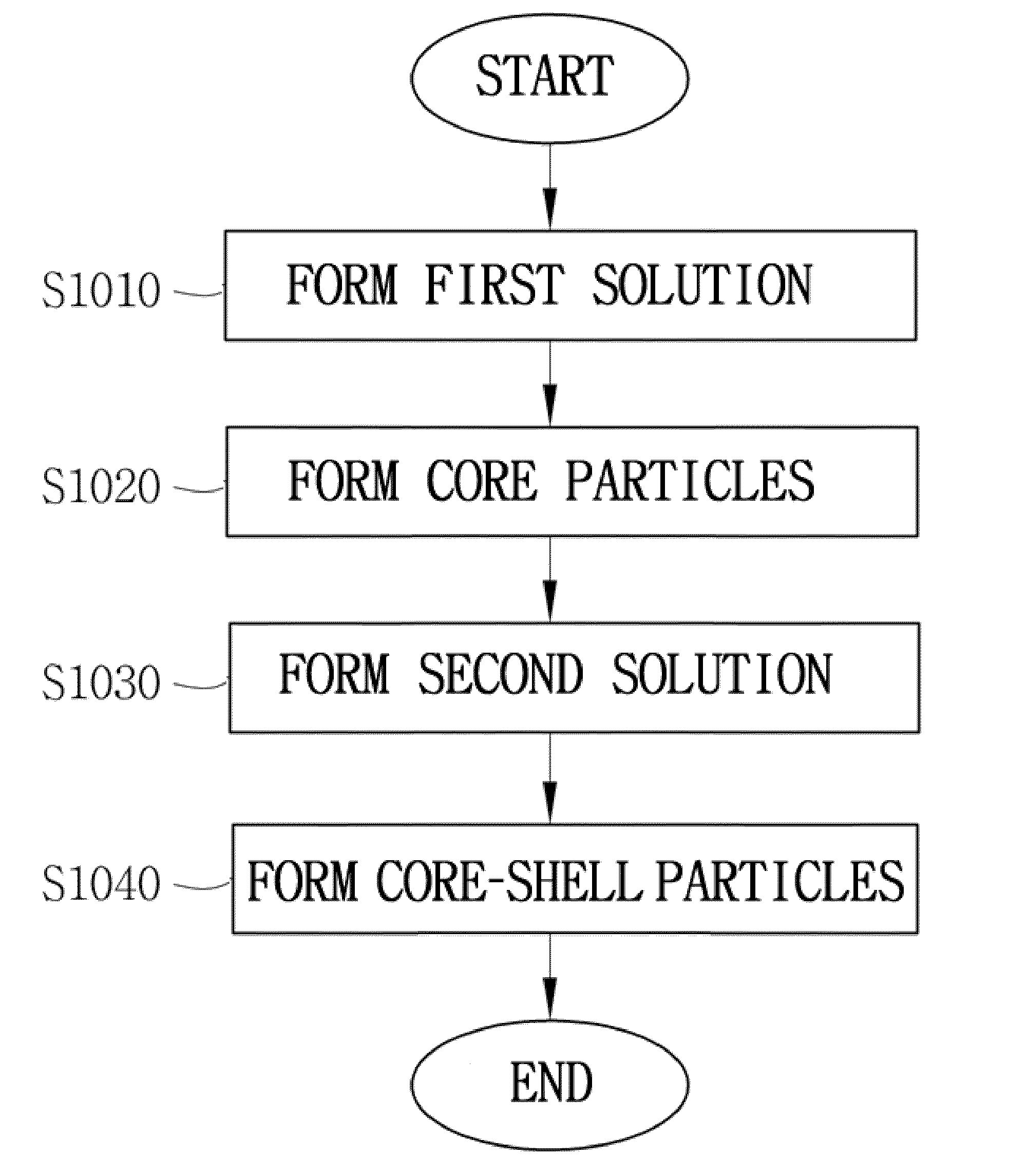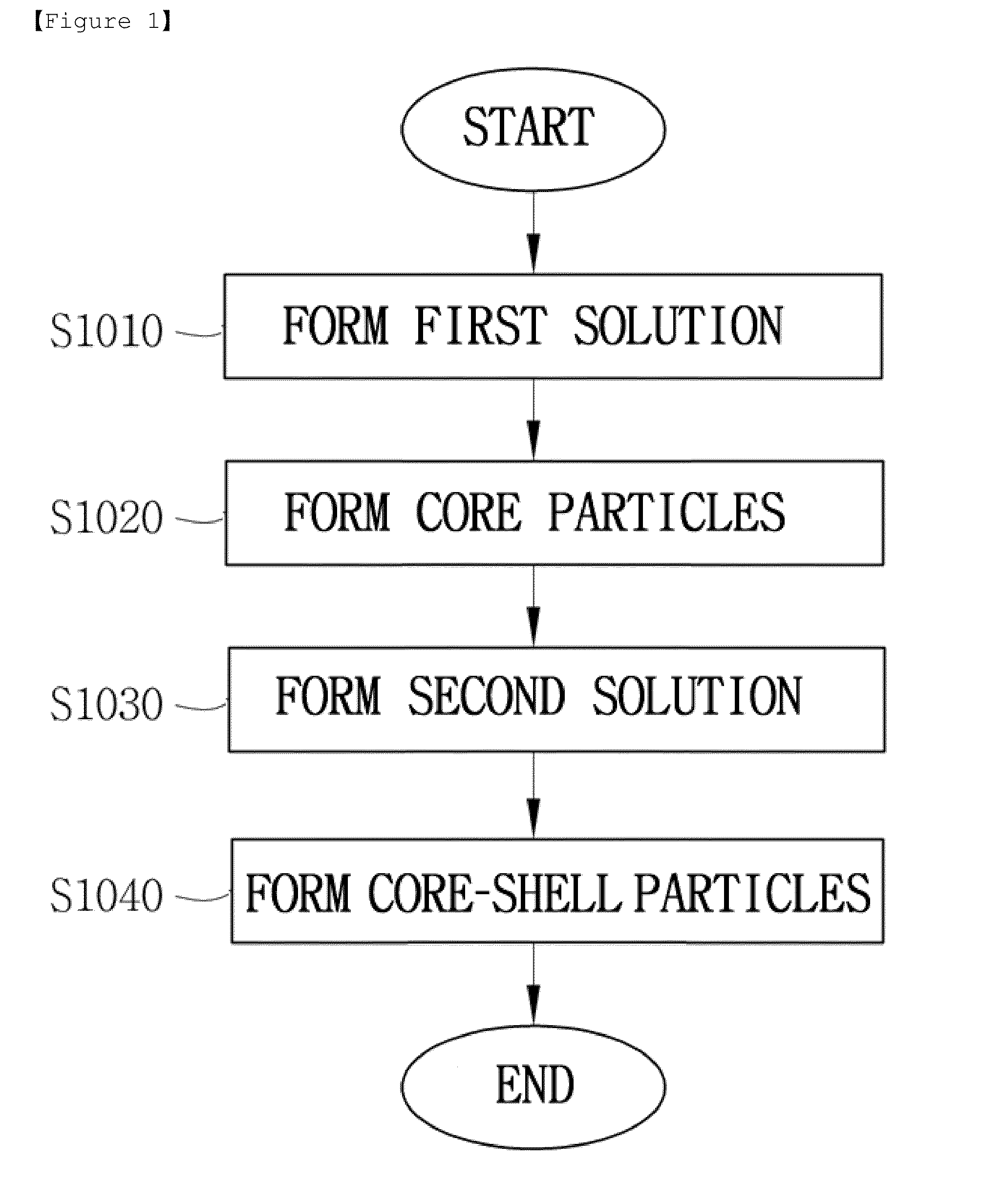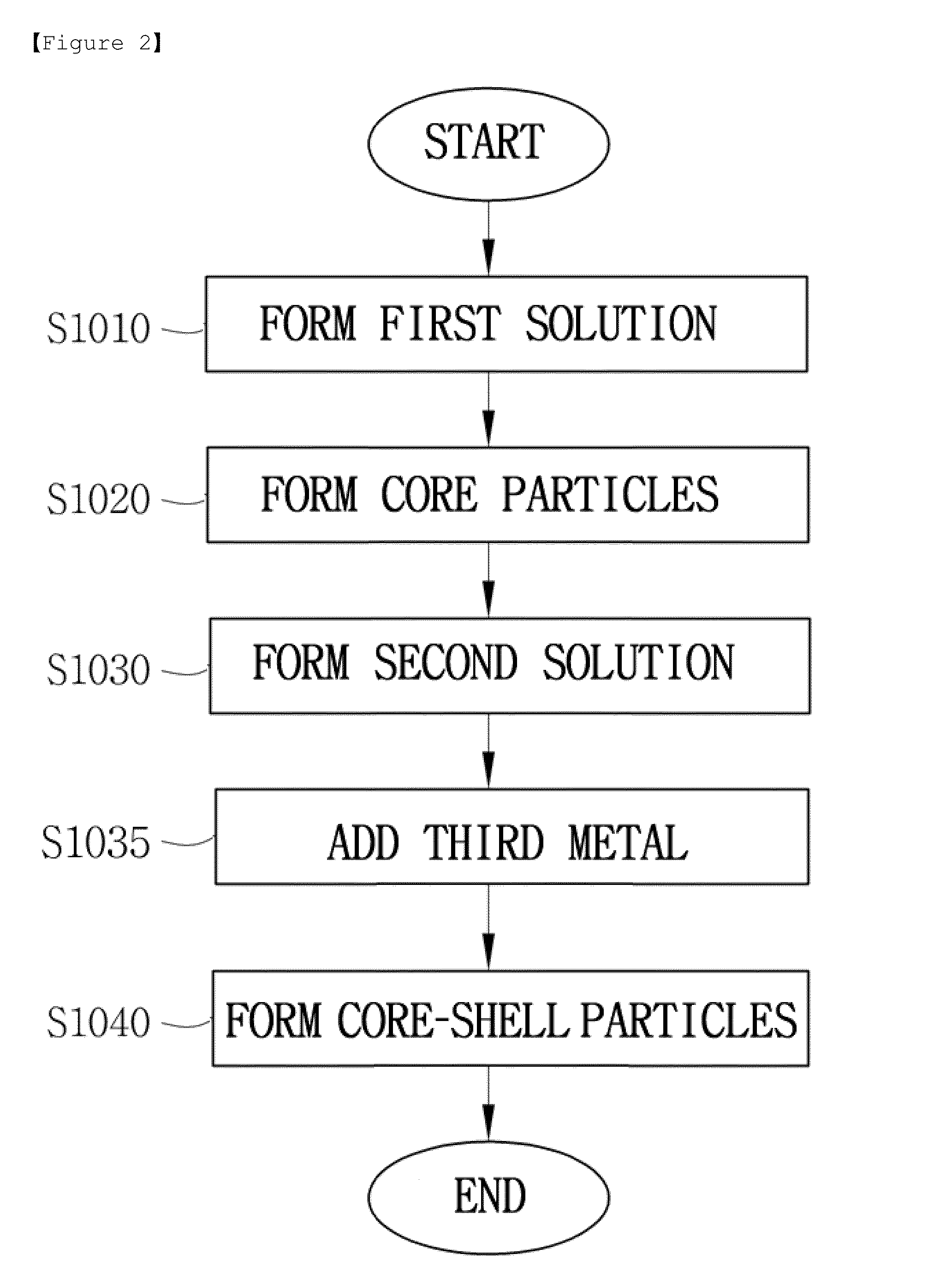Method for fabricating core-shell particles and core-shell particles fabricated by the method
a technology of coreshell and coreshell, which is applied in the direction of cell components, physical/chemical process catalysts, metal/metal-oxide/metal-hydroxide catalysts, etc., can solve the problems of high cost, high cost, and inability to synthesize nano particles having a uniform size and shape, and achieves easy mass production. , the effect of low cos
- Summary
- Abstract
- Description
- Claims
- Application Information
AI Technical Summary
Benefits of technology
Problems solved by technology
Method used
Image
Examples
example 1
[0101]A first solution was formed by adding 50 mg of Na2PdCl4, which is a Pd precursor, as a first metal salt, and 50 mg of polyoxyethylene(20) oleyl ether having the repetition number of oxyethylene units of 20, as a first surfactant, to 10 ml of water (distilled water) as a first solvent, and dissolving the mixture. Subsequently, after 60 mg of ascorbic acid and 60 mg of citric acid as a first reducing agent were dissolved in water in a temperature atmosphere of 90° C., the mixture was added to the first solution, and stirred for 1 hour. After the mixture was centrifuged at 10,000 rpm for 10 minutes, the supernatant in the upper layer thereof was discarded, the remaining precipitate was re-dispersed in 20 ml of water, and then the centrifugation process was repeated once more to form core particles including palladium (Pd).
[0102]Subsequently, a second solution was formed by adding 10 mg of the core particles including palladium (Pd), 40 mg of HAuCl4 as a second metal salt, and 40 ...
example 2
[0105]Core-shell particles composed of a core including palladium (Pd) and a shell including platinum (Pt) were formed in the same manner as in Example 1, except that K2PtCl4 was used as the second metal salt. The average particle diameter of the core-shell particles formed by Example 2 was 22 nm, and the difference of the particle diameters to the average particle diameter was calculated within ±8.7%.
example 3
[0106]Core-shell particles composed of a core including gold (Au) and a shell including platinum (Pt) were formed in the same manner as in Example 1, except that HAuCl4 and K2PtCl4 were used as the first metal salt and the second metal salt, respectively. The average particle diameter of the core-shell particles formed by Example 3 was 21 nm, and the difference of the particle diameters to the average particle diameter was calculated within ±6.3%.
PUM
| Property | Measurement | Unit |
|---|---|---|
| standard reduction potential | aaaaa | aaaaa |
| particle diameter | aaaaa | aaaaa |
| thickness | aaaaa | aaaaa |
Abstract
Description
Claims
Application Information
 Login to View More
Login to View More - R&D
- Intellectual Property
- Life Sciences
- Materials
- Tech Scout
- Unparalleled Data Quality
- Higher Quality Content
- 60% Fewer Hallucinations
Browse by: Latest US Patents, China's latest patents, Technical Efficacy Thesaurus, Application Domain, Technology Topic, Popular Technical Reports.
© 2025 PatSnap. All rights reserved.Legal|Privacy policy|Modern Slavery Act Transparency Statement|Sitemap|About US| Contact US: help@patsnap.com



